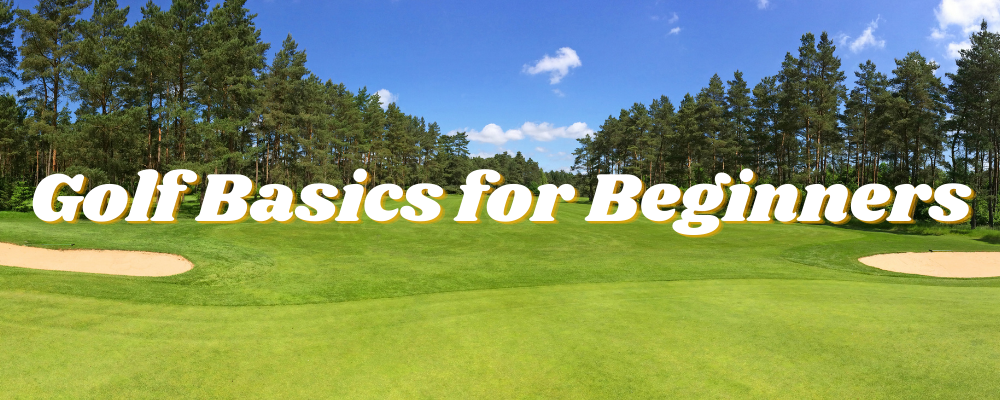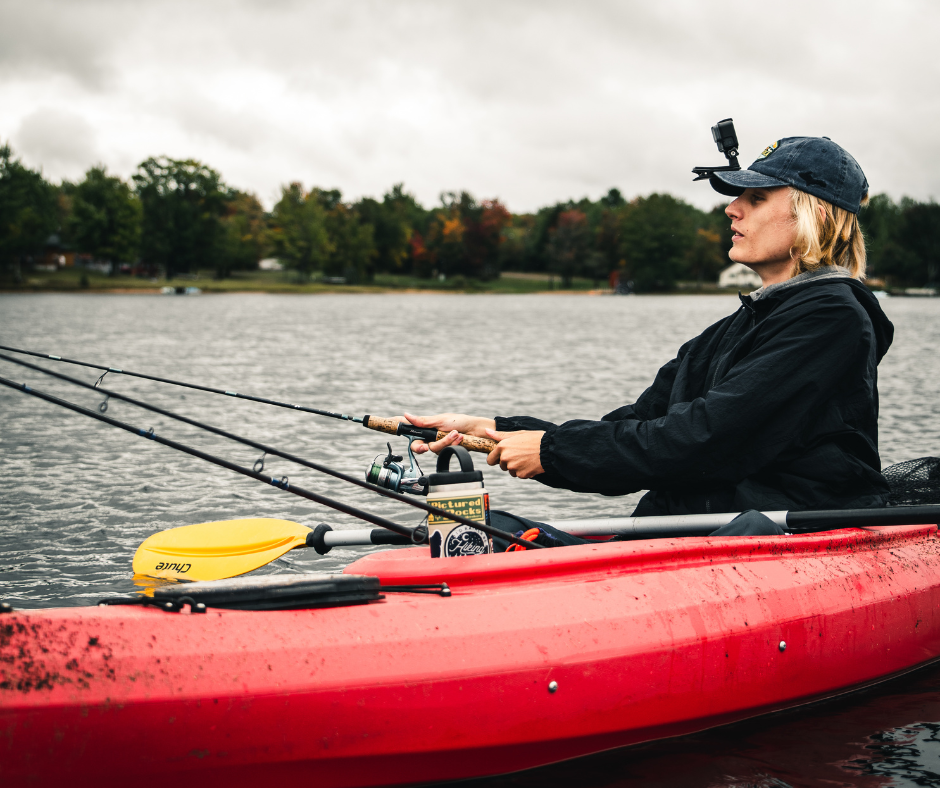
Here is a basic lesson in golf or golf basics for beginners or for the person who has no clue about the game. Golf is uniquely fit for a social-distancing world by its nature. It is a game played over a vast outdoor space, a worthwhile source of exercise, and a recreation for the mind.
The rage of golf has grown tremendously over the past fifty years, giving us champions like Arnold Palmer, Greg Norman, and Tiger Woods, and world-renowned courses like Pinehurst, Augusta National, and the Blue Monster at Doral.
Golf is so popular because it is the opportunity to be outdoors, to get a pleasing whole body workout, network with buddies or business colleagues at a leisurely pace, and play a game that you can never perfect. Your scorecard, over time, indicates your progress, which keeps you playing again and again.
Golf Basics
Golf is played on an eighteen-hole course; every hole has its “par”, which is the number of tee shots (drives), fairway shots, chips (short hits as you approach the green), and putts.
The par number is based on the length and difficulty of the hole. Pars vary from 3 to 6. If you bring the ball in the hole in five shots on a par five hole, you “made par.” If it took you six shots, it is called a bogie, if you made it in four, it is a birdie.
There are usually “hazards” of some kind in all the holes. Bodies of water, sand traps, and trees are strategically positioned to make the hole more challenging. Newbie golfers should aim to find courses to play that are easier to play, with lesser hazards.
Each player keeps their own score, marking the total number of shots for each hole. In the end, each player adds their scores-the lowest number is the winner.
It is significant for golf beginners to not make too much of themselves. It consumes a large chunk of the time to improve at this game; even though the professionals make it look so natural.
Take a task or two at the outset; it will allow you to foster a fair swing and assist you to get off to a good beginning. Remember that it’s simply a game. Have a good time and realize the big picture-you is alfresco and you’re not at work!
Standard Golf Terms
The major golf basics terms related to a golf course:
- Golf Tee – The wooden peg you place your golf ball on at the beginning of the hole.
- Golf Tee Box – The area in which you first play the ball at the beginning of the hole.
- Fairway – The part of the golf course that directs to the green, usually where putting takes place.
- The green – The soft, plush ground surrounding the hole.
- Bunker – A sand-filled ditch that usually surrounds the green.
- The rough – The wild area on either side of the fairway. This area is usually filled with trees and long grass.
- Hazard – Streams, ponds, trees, bunkers. Anything that comes between you and successfully getting the golf ball in the hole.
- Handicap – A golf handicap is a number that represents the skill level of a golfer. A golf handicap will differ from player to player and is based on earlier scores earned. To calculate your handicap, you will require to have golfed at least a 9 or 18-hole course and have your scorecard handy.
The major golf basics terms related to golf scoring:
- Ace – A hole in one.
- Eagle – 2 strokes under par.
- Birdie – 1 stroke under par (occasionally called a double eagle).
- Par – The standard number of strokes it should take to get the golf ball from the tee to the hole.
- Bogey – 1 stroke above par.
- Double Bogey – 2 strokes above par
- Triple Bogey – 3 strokes above par
Golf Equipment
You have a lot of choices for golf equipment. Let’s take a glance at some of the equipment that most golfers consider important.
The most important pieces of golf equipment are your clubs. You should choose clubs that are suited to your style of golf. They should be easy to handle and designed for your height. For maximum forgiveness in the occurrence of a bad shot, you should lean towards the lighter graphite shafts and titanium heads.
You will need to have a full set of clubs. That implies you’ll require a driver, a 3 wood, a 5 wood, a full set of irons (from 3 to 9), a sand wedge, and a putter. That is the minimum. You can even add other clubs to your arsenal as you become more adept at the game. You can have a 1 iron for fairway shots as well as a lob wedge for getting out of the deep rough.
Pick balls that are a bit softer. Also find a ball with lower compression, especially if you are a newbie.
There are many types of tees that you can choose from. There are long tees when you require to have the ball teed up high, short tees for those tee box iron shots, and three-pronged tees for stability.
Since the golf swing requires a certain amount of stability, you will have to add golf shoes to your golf basics equipment list. Golf shoes help you stay balanced.
There is certainly a wide range of golf equipment that you can purchase and use when playing the game of golf. Simply don’t go overboard. Just focus on the basics, to begin with. When you improve, you can add the latest devices to your bag and try to bring down your score!
Golf Basics: Things To Keep In Your Golf Bag
There are many golf bags available, some intended for fashion, some for utility, and some that mix both features. There are big bags, bigger bags, and bags so big that they would keep all I need for a long weekend recess in one of the side pockets!
Generally speaking, you need a bag sufficiently large to hold your clubs, extra balls, your glove, tees, vehicle keys, extra pencils, ball markers, a ball retriever, sunscreen, a windbreaker, and a large umbrella. You can also incorporate a cooler bag that fits inside any golf bag to keep your favorite beverage ice cold on the golf course.
Furthermore, it is a good idea to have a packet of tissues, hand sanitizer, band-aids, and assuming you play courses, where bugs are an issue, a container of bug repellent, comes in extremely convenient.
A small pack of baby wipes comes in very conveniently; in your bag, they get warmed by the heat, so when you get sweaty or a sand trap covered you with sand, a nice warm wipe can be extremely refreshing.
I happen to be allergic to bees, hornets, and wasps, so my Epipen is an essential addendum to my bag. I am also hypoglycemic so I bring Lifesavers, which have to be replaced several times over the year because they will generally melt.
One thing that doesn’t need to be in your golf bag is your cell phone. If it is a must-carry for you, switch off the ringer as a courtesy to other players. If you must use it, be conscious of others who might be taking a swing or putting their ball. Be courteous!
Having these things in your golf bag ought to give you everything you will need, even in a minor crisis (like a blister) or a major inconvenience, like a sudden rainstorm. Being organized makes the game a great deal more fun.
Golf Basics: The Long Game
The long game hints to your drives (shots off the tee) and fairway shots; everything short of the shots you make to get onto the green.
Each hole has a distinct difficulty level, different par, and distinctive hazards, so teaching you to use your Driver on each tee would be blatantly wrong. This is something you will learn over the period as you learn the various shots you make as indicated by the club, the placement of the ball, and your personal swing.
Generally speaking, the lower the club number, the longer and lower your ball will go. A 4-iron shot will travel long and low and will most likely roll, whereas a 9-iron shot will have considerably more loft and go less distance both in the air and on the ground.
Click to know more about The Long Game Mastery Program
The professionals on TV make it look so easy; they consistently hit the ball long and straight and never miss-hit the ball making it spill ten feet, or completely miss the ball.
Driving is vital to the game, and many hours spent at the driving range will assist with improving your distance. Experiment with the same club to see what works for you if you move the ball forward or backward in your perspective. Take an illustration, if feasible, and learn the accurate swing from the beginning.
Mastering the long game enables you to get to the green in fewer strokes, keeping your score and frustration level down. Remember that it takes a large chunk of the time to learn consistency and also make sure to have fun!
Golf Basics: The Short Game
We’ve all seen the long precise drives of Tiger Woods. The ball flies through the air and lands in the middle of the fairway, 300 yards away. The green-peered monster of envy consumes us as we wonder if we could at any point hope to drive like that. Fortunately, long drives are not the be-all-end-all game of golf.
Enter the short game. Without great short game skills, all the long drives are for naught. The short game is those shots that bring us onto the green from about one hundred feet out, be it from the fairway, a bunker, the rough, or a drop zone, and includes chips, sand shots, and pitches.
This is the place where your higher numbered clubs would be used, just as your pitching iron, lob wedge, or sand wedge.
Many golf courses have practice regions as well as a driving range. Spend some time working on hitting your ball onto the green from various distances. Strive for a ten-foot circle in the focal point of the green at first. Experiment using your wedges; what works for someone else, might not work for you and your particular swing.
Click to know more about:
1. One Secret to A Great Short Game
2. Short Game Masterclass
After you get acquainted with doing this drill consistently, it’s time to spend some time in a sand trap. Discovering how to get the ball out of a trap will cut your score.
Plant your feet firmly into the sand, with your left foot turned in the direction of the hole. Imagine a 4-inch circle around the ball and try to hit the edge of the circle that is away from the ball.
Grab lots of sand with your ball and swing completely. Don’t decelerate at all when or after you hit the ball. It should spring up onto the green and stop. This doesn’t work unless the sand is extremely delicate and powdery. On hard surfaces, you might need to avoid actually hitting the sand.
As in all parts of the game, just practice will help you to improve.
Golf Basics: Putting
“Drive for show, putt for dough” is the lesson we’ve all seen and understood from watching professional golfers in every competition and championship.
The specialists of golf can drive a ball from here to eternity, but it all boils down to how many strikes of the ball it takes to place the ball in the hole. The long precise drives don’t add up to anything if you’re unable to putt them accurately.
Picking a putter is important, but using whatever putter you have consistently is more so. I’ve had the same putter for quite a long time; I know what it feels like in my hand, I know its weight, and how that plays into my putts.
Putting takes loads of practice. Generally, we drive the ball eighteen times in a game but putt at least double that number. Doesn’t it stand that we should practice our putting in some measure twice as much as driving? If you can’t get to the practice green regularly, practice on your rug at home.
Click to know more about:
1. 5 Minutes to Great Putting
2. Fresh Start Putting
Always keep in mind that no ball can make it into the hole if it doesn’t have enough power behind the ball to reach there. Take the time to get down and scrutinize the path from your ball to the hole; does it incline one way or the other? Is it uphill or downhill?
Stand with your feet spread for equilibrium and line up the putt. Keep your hands, arms, and shoulders completely still; imagine that you are a “bobblehead” but you move from just below your chest. Keep your head straight over the ball. Pull your club back; keep your hands, wrists, arms, and shoulders steady – the movement comes from your chest. Hit the ball, follow it with your club.
Learn from each putt and recall the lesson. Practice, practice, practice!
General Golf Basics Etiquette
Although golf is a competitive sport, there are general guidelines and etiquette and it is a good practice to follow on the course. Though it is not found in the official rule book, these guidelines are expected to be followed at all golf courses.
- Do not talk during someone’s backswing.
- Do not walk through someone else’s line (the line from their ball to the hole).
- If a group behind you is playing faster, consider letting them go first at the next hole.
- Do not hit the ball into the group ahead of you. Wait for them to finish.
- Avoid angry outbursts.
Complete Golf Club Set
Callaway Golf Men’s Strata Complete Set
- Strata Ultimate is designed for ultimate distance and ultimate performance. This set includes Driver, 3 wood, 4 & 5 Hybrid, 6 to 9 Iron, PW & SW, Putter, Stand Bag, and 4 Headcovers.
- Woods: Full titanium golf driver offers you a large sweet spot and more forgiveness to bomb it off the tee. A very forgiving 3 wood built for long, high-flying shots in a better aerodynamic head shape.
- The 4 and 5 hybrids are great choices for long irons, so you can play with more confidence on a variety of shots
- Irons have high-flight technology that delivers distance, forgiveness, and control from stainless steel.
- Precise face milling on the putter is intended for better accuracy and distance control to enable you to sink more putts.





One thought on “Golf Basics for Beginners”